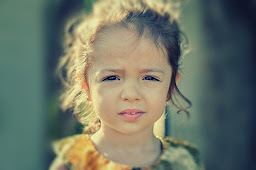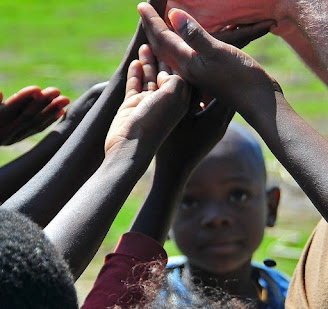Antiracism Education and Young Children
Additionally, we should not wait to engage children in conversations
and experiences centered on the examination of differences. Research suggests
children as young as six months old not only notice racial differences
including skin color and hair type, but that they also begin to form racial
biases (e.g., demonstrating a preference for interacting with members of their
own race). Lack of exposure to people of other races is believed to contribute
to this phenomenon. So, what can we do to help our children appreciate
diversity and combat racist views? I emphasize the following three points to
students in my education courses:
1. TALK: talk about race and encourage children to notice,
name, and celebrate the beauty in their own physical features as well as those
of different races. Help children use precise and affirming language to
describe differences and encourage them to express their understandings in ways
that make sense to them (e.g., drawing, painting, singing). I have used a color
wheel and various children’s books (e.g., Shades of People by Shelly Rotner and
Sheila M. Kelly; Skin Like Mine by Latishia M. Perry; The Colors of Us by Karen
Katz) to support young children in their efforts to appreciate different skin
tones and express their understandings.
2. PLAY: encourage children to play with those they
understand to be different from them. Make explicit the ways in which your own
life is enriched by friends, family, and colleagues who identify differently
(racially and/or culturally) from you and invite children to do the same.
3. READ: Rudine Simms Bishop coined the metaphor mirrors,windows, and sliding glass doors to explain that books offer children invaluable
opportunities to affirm their own identities and experiences as well as
introduce and appreciate the identities and experiences of those less like
them. Evaluate the books you make available to children. Do they have access to
books that represent a wide variety of races and cultures? Are the racially
and/or culturally diverse characters in these books portrayed in racist,
biased, and/or stereotypical ways? For more information on how to evaluate
children’s books for bias see https://www.teachingforchange.org/selecting-anti-bias-books
and
https://www.adl.org/education/resources/tools-and-strategies/assessing-childrens-literature.
Parents can also read and discuss antiracism books specifically (e.g.,
Antiracist Baby by Ibram X. Kendi) to help children begin to understand
important concepts including race, racist, and antiracist.



Comments
Post a Comment